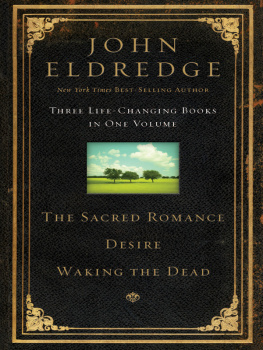WOMAN
VOLUME VI
WOMEN OF THE ROMANCE COUNTRIES
by
JOHN R. EFFINGER, Ph.D.
OF THE UNIVERSITY OF MICHIGAN
BOCCACCIO'S MERRY RACONTEURS
After the painting by Jacques Wagrez
In the meantime, Naples, in the hands of the invaders, had been stained with blood, and then ravaged by the great plague of which Boccaccio has given us a picture, and of the idyllic way the rich people passed their time, in his Decameron.
Woman
In all ages and in all countries
VOLUME VI
Illustrated
PHILADELPHIA
GEORGE BARRIE & SONS, PUBLISHERS
PREFACE
No one can deny the influence of woman, which has been a potent factor in society, directly or indirectly, ever since the days of Mother Eve. Whether living in Oriental seclusion, or enjoying the freer life of the Western world, she has always played an important part in the onward march of events, and exercised a subtle power in all things, great and small. To appreciate this power properly, and give it a worthy narrative, is ever a difficult and well-nigh impossible task, at least for mortal man. Under the most favorable circumstances, the subject is elusive and difficult of approach, lacking in sequence, and often shrouded in mystery.
What, then, must have been the task of the author of the present volume, in essaying to write of the women of Italy and Spain! In neither of these countries are the people all of the same race, nor do they afford the development of a constant type for observation or study. Italy, with its medival chaos, its free cities, and its fast-and-loose allegiance to the temporal power of the Eternal City, has ever been the despair of the orderly historian; and Spain, overrun by Goth, by Roman, and by Moslem host, presents strange contrasts and rare complexities.
Such being the case, this account of the women of the Romance countries does not attempt to trace in detail their gradual evolution, but rather to present, in the proper setting, the most conspicuous examples of their good or evil influence, their bravery or their cowardice, their loyalty or their infidelity, their learning or their illiteracy, their intelligence or their ignorance, throughout the succeeding years.
Chroniclers and historians, poets and romancers, have all given valuable aid in the undertaking, and to them grateful acknowledgment is hereby made. JOHN R. EFFINGER.
University of Michigan.
PART FIRST
ITALIAN WOMEN
CHAPTER I
THE AGE OF THE COUNTESS MATILDA OF TUSCANY
The eleventh century, which culminated in the religious fervor of the First Crusade, must not on that account be considered as an age of unexampled piety and devotion. Good men there were and true, and women of great intellectual and moral force, but it cannot be said that the time was characterized by any deep and sincere religious feeling which showed itself in the general conduct of society. Europe was just emerging from that gloom which had settled down so closely upon the older civilizations after the downfall of the glory that was Rome, and the light of the new day sifted but fitfully through the dark curtains of that restless time. Liberty had not as yet become the shibboleth of the people, superstition was in the very air, the knowledge of the wisest scholars was as naught, compared with what we know to-day; everywhere, might made right.
In a time like this, in spite of the illustrious example of the Countess Matilda, it cannot be supposed that women were in a very exalted position. It is even recorded that in several instances, men, as superior beings, debated as to whether or not women were possessed of souls. While this momentous question was never settled in a conclusive fashion, it may be remarked that in the heat of the discussion there were some who called women angels of light, while there were others who had no hesitation in declaring that they were devils incarnate, though in neither case were they willing to grant them the same rights and privileges which they themselves possessed. Though many other facts of the same kind might be adduced, the mere existence of such discussion is enough to prove to the most undiscerning that woman's place in society was not clearly recognized, and that there were many difficulties to be overcome before she could consider herself free from her primitive state of bondage.
In the eye of the feudal law, women were not considered as persons of any importance whatever. The rights of husbands were practically absolute, and led to much abuse, as they had a perfectly legal right to punish wives for their misdeeds, to control their conduct in such a way as to interfere with their personal liberty, and in general to treat them as slaves and inferior beings. The whipping-post had not then been invented as a fitting punishment for the wife beater, as it was perfectly understood, according to the feudal practices as collected by Beaumanoir, "that every husband had the right to beat his wife when she was unwilling to obey his commands, or when she cursed him, or when she gave him the lie, providing that it was done moderately, and that death did not ensue." If a wife left a husband who had beaten her, she was compelled by law to return at his first word of regret, or to lose all right to their common possessions, even for purposes of her own support.
The daughters of a feudal household had even fewer rights than the wife. All who are willing to make a candid acknowledgment of the facts must admit that even to-day, a girl-baby is often looked upon with disfavor. This has been true in all times, and there are numerous examples to show that this aversion existed in ancient India, in Greece and Sparta, and at Rome. The feudal practices of medival Europe were certainly based upon it, and the Breton peasant of to-day expresses the same idea somewhat bluntly when he says by way of explanation, after the birth of a daughter: Ma femme a fait une fausse couche. Conscious as all must be of this widespread sentiment at the present time, it will not be difficult to imagine what its consequences must have been in so rude a time as the eleventh century, when education could do so little in the way of restraining human passion and prejudice. As the whole feudal system, so far as the succession of power was concerned, was based upon the principle of primogeniture, it was the oldest son who succeeded to all his father's lands and wealth, the daughter or daughters being left under his absolute control. Naturally, such a system worked hardship for the younger brothers, but then as now it was easier for men to find a place for themselves in the world than for women, and the army or the Church rarely failed to furnish some sort of career for all those who were denied the rights and privileges of the firstborn. The lot of the sister, however, was pitiful in the extreme (unless it happened that the older brother was kind and considerate), for if she were in the way she could be bundled off to a cloister, there to spend her days in solitude, or she could be married against her will, being given as the price of some alliance.
The conditions of marriage, however, were somewhat complicated, as it was always necessary to secure the consent of three persons before a girl of the higher class could go to the altar in nuptial array. These three persons were her father or her guardian, her lord and the king. It was Hugo who likened the feudal system to a continually ascending pyramid with the king at the very summit, and that interminable chain of interdependence is well illustrated in the present case. Suppose the father, brother, or other guardian had decided upon a suitable husband for the daughter of the house, it was necessary that he should first gain the consent of that feudal lord to whom he gave allegiance, and when this had been obtained, the king himself must give his royal sanction to the match. Nor was this all, for a feudal law said that any lord can compel any woman among his dependants to marry a man of his own choosing after she has reached the age of twelve. Furthermore, there was in existence a most cruel, barbarous, and repulsive practice which gave any feudal lord a right to the first enjoyment of the person of the bride of one of his vassals. As Legouv has so aptly expressed it:











